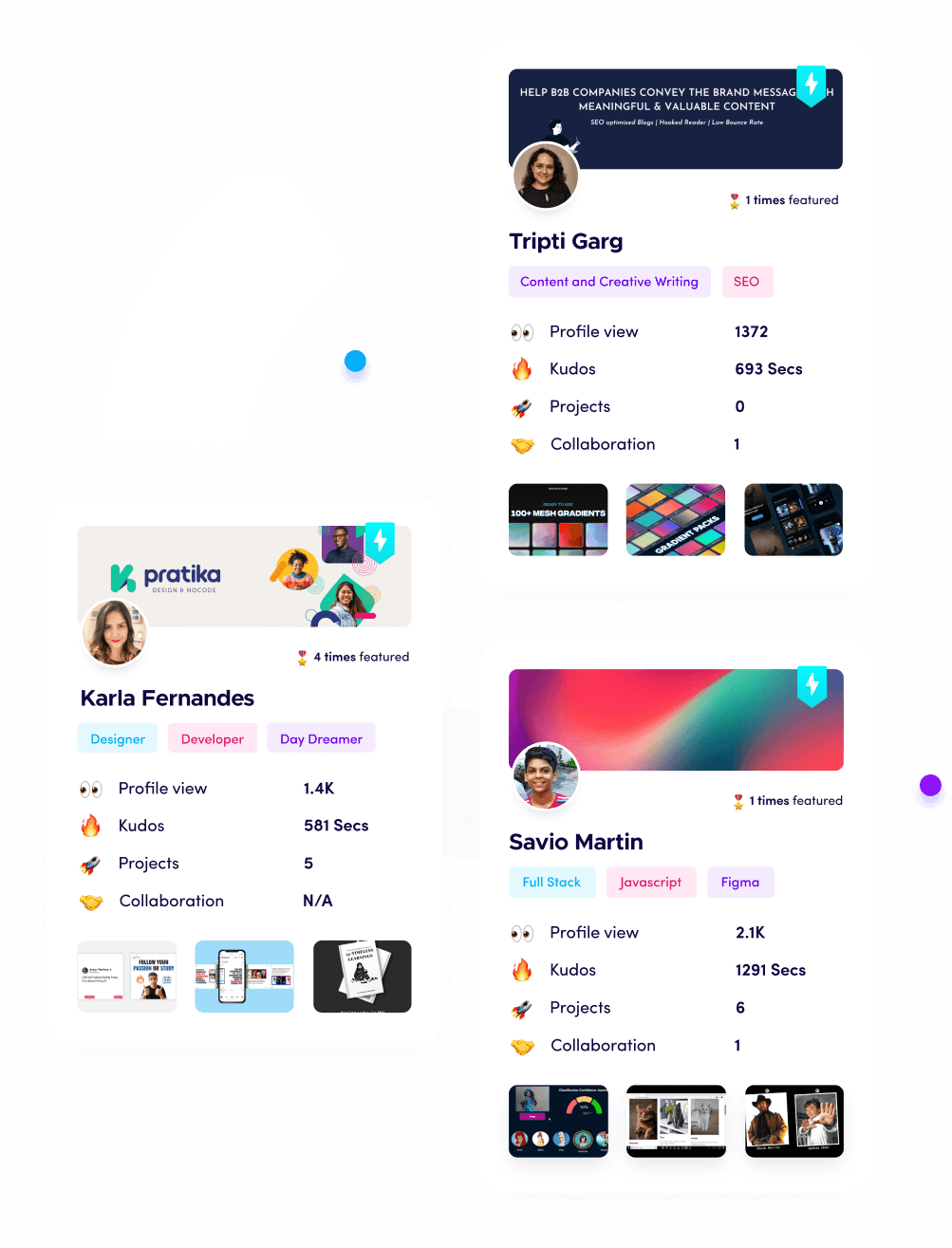Content Writing Portfolio Tips for Freelancers in 2025

Riten Debnath
15 Jun, 2025

Are you dreaming of landing high-paying freelance content writing gigs in 2025? The secret is not just in your writing skills, but in how you present them. Your portfolio is your digital handshake, your personal brand, and your best salesperson. If you want clients to trust you with their words and their business, you need a portfolio that showcases your talent, your results, and your professionalism.
I’m Riten, founder of Fueler, a platform that helps freelancers and professionals get hired through their work samples. In this article, I’ll share the most effective, up-to-date tips for building a content writing portfolio that gets you noticed and hired as a freelancer in 2025. Your portfolio is more than a collection of writing samples, it’s your proof of skill, your credibility, and your shortcut to trust.
Focus on Your Niche and Ideal Client
Choosing a niche is one of the most powerful things you can do as a freelance content writer. When you specialize, you become the go-to expert for specific industries or content types. This makes it easier for clients to find you, trust you, and pay you more for your expertise. Start by thinking about the topics, industries, or formats you enjoy most. Do you love writing about technology, health, finance, travel, or education? Are you great at blog posts, case studies, website copy, or email campaigns?
Once you’ve chosen your niche, tailor your portfolio to reflect it. Create samples that speak directly to your ideal client’s needs and challenges. Use keywords and phrases that your target audience would search for, both in your sample titles and descriptions. This not only helps you get found in search engines, but also shows clients that you understand their world. As you gain more experience, update your portfolio to include new niches or skills, but always keep it focused and relevant.
- Select 1-3 niches or content types that match your interests and strengths.
- Develop writing samples that address common problems or goals in those niches.
- Use niche-specific keywords in your portfolio for better search visibility.
- Regularly update your portfolio to reflect your evolving expertise and interests.
Create High-Quality, Error-Free Samples
Your portfolio is a direct reflection of your professionalism and attention to detail. Even a small typo or awkward sentence can make a potential client doubt your abilities. That’s why every sample in your portfolio should be polished, error-free, and formatted for easy reading. If you’re not confident in your editing skills, consider asking a friend or hiring a proofreader to review your work.
Variety is important, but quality is even more so. Include a mix of short-form and long-form content—think blog posts, articles, web copy, case studies, product descriptions, and newsletters. Make sure each piece demonstrates your ability to write clearly, engage readers, and achieve the intended goal, whether that’s informing, persuading, or entertaining. As you gain more experience, replace older or weaker samples with stronger, more recent work.
- Aim for 8-12 samples that showcase your range and best writing.
- Carefully proofread every sample for grammar, spelling, and clarity.
- Include both published and unpublished work, using PDFs or screenshots if needed.
- Update your portfolio regularly to keep it fresh and impressive.
Tell the Story Behind Each Sample
Clients aren’t just looking for good writing—they want to know you can solve their problems and achieve results. For each sample, don’t just upload the text. Add a brief story that explains the context: What was the client’s goal? What challenges did you face? How did you approach the project? What results did your writing achieve?
This storytelling approach transforms your portfolio from a static gallery into a dynamic showcase of your strategic thinking and problem-solving skills. It helps clients see you as a partner, not just a writer. If you have data—like increased website traffic, higher engagement, or more sales—share it. Even if you’re showing a mock project, explain your research, your choices, and what you learned.
- Write a short project summary for each sample, covering goals, challenges, and outcomes.
- Highlight your role in the project, especially if you worked with a team.
- Share results with real data or client feedback when possible.
- For mock samples, explain your research and creative process.
Make Your Portfolio Easy to Navigate
A cluttered or confusing portfolio can quickly turn clients away, no matter how good your writing is. Your portfolio should be clean, organized, and easy to browse. Group your samples by format (blog, web copy, email), topic, or client. Use a simple menu or table of contents so visitors can quickly find what they’re looking for.
Visual appeal matters too. Use high-quality images, covers, or branded graphics to make your portfolio inviting. Make sure your site loads quickly and looks great on both desktop and mobile devices. Test your portfolio with friends or colleagues to get feedback on usability. Remember, a smooth user experience makes you look more professional and trustworthy.
- Organize samples by type, topic, or client for easy browsing.
- Add short descriptions and visuals to make your portfolio attractive.
- Use a clear menu or navigation bar for quick access to different sections.
- Ensure your portfolio is mobile-friendly and loads fast.
Promote Your Portfolio and Network Actively
Even the best portfolio won’t help if nobody sees it. Promotion is key to attracting clients as a freelancer. Share your portfolio on LinkedIn, Twitter, and other social media platforms. Add the link to your email signature, business cards, and online profiles. Reach out to potential clients with personalized messages and links to relevant samples.
Networking is just as important as promotion. Join freelance writing groups, participate in online communities, and attend virtual or in-person events where your ideal clients hang out. Offer value by sharing tips, answering questions, or collaborating on projects. The more visible and helpful you are, the more likely clients are to remember and hire you.
- Share your portfolio regularly on social media and professional networks.
- Add your portfolio link to your email signature and business cards.
- Reach out to potential clients with tailored messages and sample links.
- Stay active in writing and industry communities to build your reputation.
Use Fueler to Present Real Assignments and Win Clients
Fueler is designed for freelancers who want to get hired based on real assignments and results. On Fueler, you can upload writing samples, add detailed case studies, and organize your portfolio by niche or content type. Recruiters and clients can easily browse your work, see your process, and contact you directly. Assignment-based portfolios are especially valuable in 2025, as companies want to see proof of skill, not just promises. Fueler’s user-friendly design and focus on real work make it the ideal platform for freelancers who want to stand out.
- Upload and organize your samples by format, topic, or industry.
- Add case studies and project stories for each assignment.
- Get discovered by companies searching for content writing talent.
- Use Fueler’s sharing tools to promote your portfolio widely.
Final Thought
In 2025, your content writing portfolio is your most powerful tool as a freelancer. It’s not just about showing what you’ve written, but about proving your value, telling your story, and making it easy for clients to trust and hire you. Focus on your niche, showcase your best work, add context and results, and keep your portfolio organized and up to date. Promote your work actively and use platforms like Fueler to make your portfolio impossible to ignore.
FAQs: Content Writing Portfolio Tips for Freelancers
1. How do I choose the right niche for my content writing portfolio?
Choose industries or topics you enjoy and have experience with, then create targeted samples and use relevant keywords to attract your ideal clients.
2. What makes a content writing portfolio attractive to clients?
High-quality, error-free samples, clear organization, project stories, and proof of results make your portfolio more appealing and trustworthy.
3. How can I promote my content writing portfolio as a freelancer?
Share your portfolio on social media, in your email signature, and through networking. Join writing groups and pitch directly to potential clients with personalized messages.
4. Why is storytelling important in a writing portfolio?
Describing the story behind each sample shows your thinking, strategy, and ability to solve client problems, making you more valuable.
5. What platform should freelancers use for their writing portfolio in 2025?
Fueler is ideal for assignment-based portfolios, but your own website or portfolio builders also work well for flexibility and branding.
What is Fueler Portfolio?
Fueler is a career portfolio platform that helps companies find the best talents for their organization based on their proof of work.
You can create your portfolio on Fueler, thousands of freelancers around the world use Fueler to create their professional-looking portfolios and become financially independent. Discover inspiration for your portfolio
Sign up for free on Fueler or get in touch to learn more.


